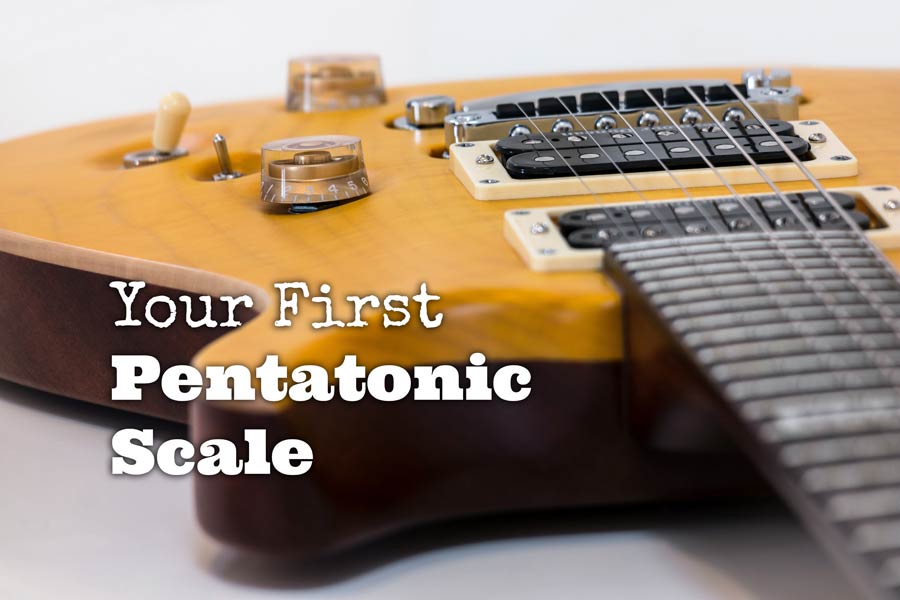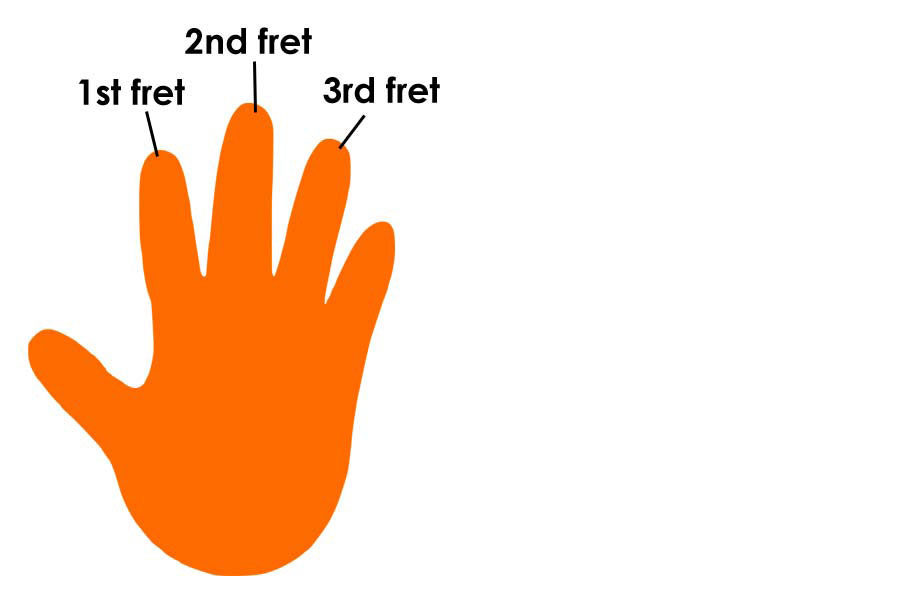May 12, 2019 by Klaus Crow
 This tutorial has been conceived for beginner guitar players who want to go beyond strumming chords and start playing scales all along the fretboard.
This tutorial has been conceived for beginner guitar players who want to go beyond strumming chords and start playing scales all along the fretboard.
Learning how to play scales is a great way to expand your musicality and exercise your fingers agility; one of the easiest scales to learn at the beginning of your lead guitar adventures is definitely the scale pentatonic.
We’re going to see the pentatonic scale in open position, that means that the shape of the scale uses some open strings. This decreases the complexity of the fingering and makes easier to play great melodies.
What is a Pentatonic Scale
In the word “pentatonic”, “penta” means “five”, in fact a pentatonic scale is composed of 5 notes (in this tutorial we’re not going to investigate the historical origin of this scale, you can find an interesting article on that here)
We already know the major scale. In the key of C, the major scale is:
C D E F G A B
By definition, a major scale pentatonic is like a major scale, without the 4th and 7th degrees. Thus the C major scale pentatonic is composed of the following notes:
C D E G A
We dropped the 4th, F, and the 7th, B
The relative minor scale of the C major is the A minor (to find a relative minor scale of a major scale, simply start from the 6th degree of the major scale and build your minor scale with the same notes of the major one)
A B C D E F G
By definition, a minor scale pentatonic, is a minor scale without the 2nd and 6th degrees (F and B)
A C D E G
See? We have the same five notes of the major pentatonic scale, but this time with start from A instead of C.
As an exercise, try to build the G major and its relative minor pentatonic scales (solution at the bottom of the page). Hint: the G major scale is composed of these notes: G A B C D E F#
Now it’s time to play some penta-sounds on the guitar! See the picture below, on the fretboard we have highlighted the notes of our pentatonic scale, C D E G A:
Fretboard diagram created with the FaChords Scale Finder. The orientation is with the E lowest string at the bottom of the picture, and the guitar headstock of the left. Basically, it’s the point of view of the player.
Basic Exercises
Here below you find the tabs of 3 basic exercises that will help get familiar with the open string pentatonic shape and gradually increase fluidity. You should always practice with a metronome; at the beginning set a low speed, such as 60 bpm, and increase little by little. The secret is to play slow and perfect, speed comes with time.
Exercise #1 (Click here for the PDF)
Exercise #2 (Click here for the PDF)
Exercise #3 (Click here for the PDF)
A note on the fingering
The correct fingering for playing the scale in open position is the following:
• for the notes on the 1st fret, use the index finger
• for the notes on the 2nd fret, use the middle finger
• for the notes on the 3rd fret, use the ring finger.
• The pinkie, for this lesson, can take some rest :-)
Where to go next
The pentatonic scale in open position is great also for building riffs. Try to mix chords and scale fragments, using the notes of the scale as passing tones between one chord and another. This kind of sound is often used in Country and Blues. You can also practice some major pentatonic scales in other positions. Have fun!
About the Author
Gianca is a guitar teacher from Italy. He is the founder of FaChords.com, a free site where you can find online guitar lessons and interactive learning software.
Solution of the exercises:
• G major pentatonic scale: G A B D E
• E minor pentatonic scale: E G A B D
Did you guess it?





Is a minor scale pentatonic always based on the relative minor scale of a major scale. I was just a little confused because you mentioned that: “By definition, a minor scale pentatonic, is a minor scale without the 2nd and 6th degrees.” Using the C minor scale as an example (C, D, D#, F, G, G#, A#), the minor scale pentatonic would be: C, D#, F, G, A#?
Correct, but the note names would be: C, Eb, F, G Bb, as the corresponding minor scale is composed of C, D, E♭, F, G, A♭, and B♭. Same frets on guitar, but different names, because of enharmonics.